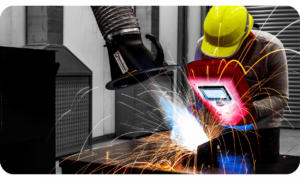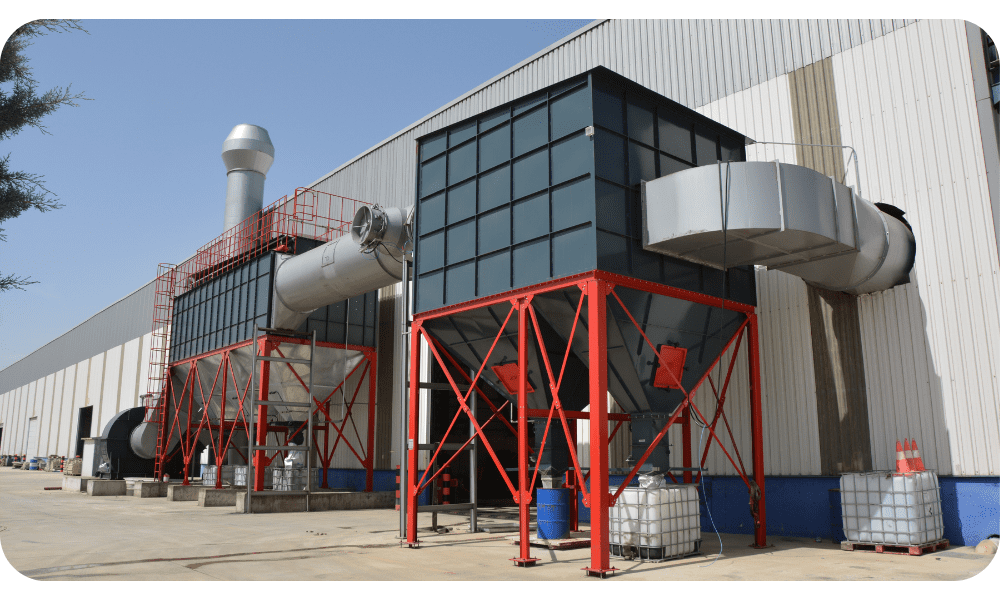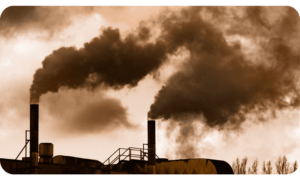
What Is Welding Fume? Why It Should Be Filtered?
The most popular method of welding today is mild steel welding, which is important for every industry that uses welding in its production process. Latest

Many industrial companies are seeking information on how to evaluate the performance of working dust collection systems. Many researches and articles which process owner refers will direct them to the filtration efficiency. However, while evaluating the performance of a dust collection system, there are other factors that need to be taken into consideration in addition to the theoretical efficiency of the filters used in the filter unit. How effectively the system can remove dust from the pollutant source and how much dust it discharges into the atmosphere/environment after the filter unit (emission value) are other factors that should be evaluated.
Extraction of Dust from the Pollutant Source
Dust, fume, oil mist, or toxic gases are generated in many industrial processes. These particles, which are harmful to health, are generally referred to as “pollutants”. Pollutants must be captured by dust collection, fume extraction or oil mist extraction system before they spread to the working environment and must be transferred to the filter unit without posing a health risk. Otherwise, it creates serious health risks for all personnel working in the factory, especially the operator of the process, and other living creatures. This is also called “Exposure”.
Throughout your manufacturing process, you need to pay attention to your exposure to annoying dust, fumes/smoke, oil mist, or gases. Many states have published legislation on this subject and set exposure limits for various dust, fumes/smoke, and gases. Employers are legally required to protect their employees from this exposure. Otherwise, serious legal sanctions and penalties may be faced. While this situation negatively affects the sustainability of the workplaces, it may lead to the loss of the preferred supplier position of the workplaces. Effectively working dust collection and fume extraction systems protect you and your employees from such risks.
The exposure level is measured and reported by occupational health and safety experts and accredited auditors. These experts collect samples from the air your employees breathe. The benefit of this process is to determine the average or highest concentrations of contaminants your employees are exposed to while performing their duties. If the pollution exposure levels are above the requested values, this indicates that you do not have an effective dust collection system. In this case, you should inspect the pollutant sources in your factory and production processes and identify the source that causes the exposure limit to be exceeded.
You can get support from a clean air professional specialized in dust collection in order to provide effective suction at the detected points. After the clean air experts check the suction performance and adequacy of the dust collection system, they will determine the type, size, and position of the suction hood that is best for you. The closer the suction hood to the pollutant source, the lower both the exposure level and the required airflow . Reducing the required airflow is reflected in energy savings and contributes to the reduction of your operating costs. During the inspection of clean air experts can detect new sources of pollutants. Establishing an effective dust collection system in these areas will lower the exposure level.
A properly designed suction hood is one of the most critical elements of the dust collection system because the dust collection system can only filter the air coming into the filter unit. In other words, if the hood captures only 20% of the dust and fume from the pollutant, no matter how much investment is made in other components of the dust collector unit, the filter unit will be able to filter only 20% of the total pollution. The remaining 80% of pollution will spread to the environment and increase the exposure level. Once you have determined the hood design and position correctly, you can capture all (or most of) the dust and fume released.

The ducting that can transfer this dust, fume, or oil mist captured by the hood to the filter unit is also a critical component of the system design. You can review our article “The Right Ducting Project Saves Money“, in which we explain why ducting is critical for the dust collection system.
Is the Filter with High Filter Efficiency the Best Filter?
Once you have determined how efficiently dust, fume, or oil mist is removed from the source of the contaminant and made the necessary improvements, you can proceed to the evaluation phase of the filter unit technology. A well-designed and manufactured fan is the fan that creates the required airflow with optimum energy consumption while overcoming the pressure losses along the line. A well-designed and manufactured filter unit, on the other hand, is a filter unit with long maintenance intervals and long filter life while effectively removing contaminants carried to it. The fact that a filter unit has the highest filtration class does not make it the most efficient and accurate filter unit. The best filter units are filter units that provide high filtration efficiency with long-lasting filters, requiring the least maintenance.
However, the efficiency of filter elements used in filter units is of course important. However, it can be a misleading indicator if you look at it alone. An H14 class HEPA filter has high filter efficiency, but if it needs to be replaced every week it is not the right system for you, and replacing it with newer technology will significantly reduce your operating costs. Under real operating conditions, dust and fumes are filtered in Jet-Pulse filter units that can work under heavy loads. Jet-pulse filter units are systems in which filter elements can be cleaned with compressed air. In this way, filter elements are long-lasting as they are constantly cleaned.
Not all jet-pulse filter units are the same. As Bomaksan, we are the only Turkish company that completed the R&D works on the Jet-Pulse cleaning system, and this work is examined and awarded by TUBITAK (The Scientific and Technological Research Council of Turkey) with a non-refund grant.
How Much of the Dust Incoming to the Filter Unit is Retained?
The particle level in the air released back to the atmosphere or indoor environment after cleaning in the filter unit is called “Emission” if it is given to the atmosphere, and “Imission” if it is discharged to the indoor environment. Since it is physically impossible for the filters to work with 100% efficiency, some pollution is returned to the environment or atmosphere depending on the inlet dust load coming to the filter unit and the general efficiency of the filter unit. Depending on the dust type, legislations and international agreements set maximum emission levels. These emission and imission values from the filter unit of your dust collection system must be lower than the values determined by local and international laws.
Emission and Imission values are made by accredited measurement institutions. These organizations can be appointed as auditors by governments, as well as report companies to be used in their internal audits. It is very important for the reliability of the dust collection system that emission and imission measurements are made by independent organizations.
RESULT
The goal of a dust collection system is to reduce the exposure level to the lowest possible point, have optimum operating efficiency (less maintenance need, long filter life, and optimum energy consumption) and stay below the permitted emission level. These are the real performance indicators of a dust collection system. It is necessary to work with different professionals to evaluate these 3 items;
– An Occupational Health and Safety Specialist to measure and evaluate indoor air quality and exposure level
– An accredited measurement firm to independently measure Emission and Imission values
– To have an effective, efficient and high-performance dust collection system; You need a reliable, experienced, and expert project designer, manufacturer, and implementer.
Bomaksan Industrial Air Filtration Systems serve you with 35 years of experience in dust collection. Bomaksan, which can provide support in the areas of effective design, production, and implementation of dust collection systems, is one of the rare companies that can provide 3-in-1 support in this field.
Case Studies

The most popular method of welding today is mild steel welding, which is important for every industry that uses welding in its production process. Latest

Project designers and process owners often focus on filtering devices when designing or purchasing a dust collection system. Yet another area they focus on is

What is Dust Leak? Dust leakage problem, which is one of the most common problems in dust collection and filtration systems, is the leakage of
© 2017 - 2022 Bomaksan Industrial Air Filtration Systems. All Rights Reserved.